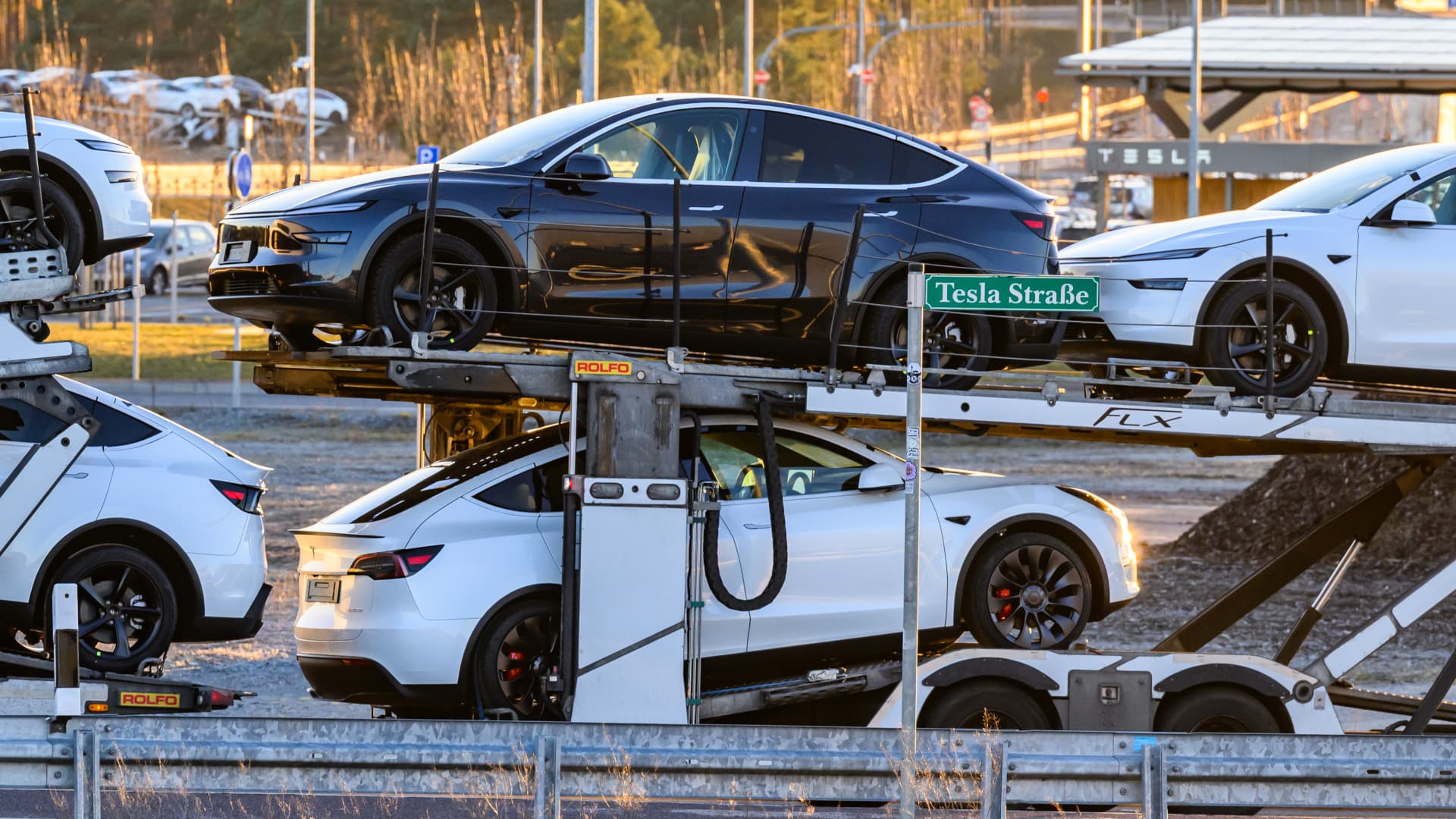Tesla, once the undisputed leader in the electric vehicle (EV) market, is facing significant challenges as evidenced by its second consecutive quarterly decline in vehicle deliveries. The second quarter of 2025 saw a 14% year-over-year drop in deliveries, totaling 384,122 vehicles. This decline has sparked concerns among investors and industry analysts, prompting a closer examination of the underlying factors and potential implications for Tesla’s future.
The EV market has evolved rapidly, and Tesla is no longer the sole player in this space. Established automakers and numerous startups are now competing for market share, offering a wider range of EV options to consumers. This increased competition has led to a more price-sensitive market, where Tesla’s premium pricing may be a barrier for some potential buyers. Additionally, consumer preferences are shifting, with some buyers seeking different features, designs, or technologies than what Tesla currently offers.
Production constraints and supply chain disruptions have also contributed to Tesla’s delivery decline. The introduction of the updated Model Y may have temporarily disrupted production lines, leading to a slowdown in output. Furthermore, the global supply chain remains vulnerable to disruptions, impacting the availability of critical components like semiconductors and battery materials. Tesla’s new Gigafactories in Berlin and Texas have also faced challenges in scaling up production to meet demand.
Elon Musk’s increasingly vocal political stances and controversial statements have also had an impact on Tesla’s brand perception. His alignment with certain political figures has drawn criticism from customers with opposing views, leading some to reconsider purchasing a Tesla. Additionally, Musk’s behavior and pronouncements on social media have, at times, been perceived as erratic or insensitive, potentially damaging the Tesla brand image.
Government policies and incentives play a crucial role in driving EV adoption. Changes in these policies can significantly impact sales. For instance, revisions to federal tax credits for EVs have made some Tesla models less attractive to buyers. The availability and generosity of EV incentives vary significantly by state and region, creating uneven demand patterns.
To address these challenges, Tesla has several options to regain momentum and secure its long-term future. Diversifying and innovating its product portfolio is one potential strategy. Developing a truly affordable EV model, priced below the Model 3, could unlock a massive new market segment. Exploring new vehicle categories, such as electric vans or trucks, could tap into unmet demand. Continuing to innovate in areas like battery technology, autonomous driving, and charging infrastructure is crucial to maintaining a competitive edge.
Optimizing production and streamlining supply chains is another essential step. Addressing production bottlenecks and strengthening supply chains is essential to meeting demand and reducing lead times. Optimizing production processes and increasing efficiency at Gigafactories is critical to boosting output. Diversifying suppliers and building stronger relationships with key partners can mitigate the risk of supply chain disruptions. Expanding vertical integration, particularly in battery production, can reduce reliance on external suppliers and improve cost control.
Rebuilding brand trust and refining messaging is also crucial. Emphasizing the quality, performance, and sustainability of Tesla vehicles can help to counteract negative perceptions. Engaging with customers and addressing their concerns through improved customer service and communication can foster loyalty. Elon Musk needs to be mindful of his public image and avoid actions that could further alienate potential customers.
Adapting to evolving government policies and actively seeking new incentives to support EV adoption is another important strategy. Engaging with policymakers to advocate for favorable EV policies and incentives is crucial. Collaborating with utilities to expand charging infrastructure and offer incentives for EV owners can boost demand. Exploring new markets with supportive EV policies can diversify sales and reduce reliance on existing markets.
In conclusion, Tesla’s Q2 2025 delivery decline serves as a wake-up call. The EV market is evolving rapidly, and Tesla must adapt to remain a leader. The company faces significant challenges, including increased competition, production constraints, and brand perception issues. However, Tesla also possesses unique strengths, including its technological innovation, brand recognition, and extensive charging network. Whether Tesla can overcome these challenges and capitalize on its strengths will determine its future in the increasingly competitive EV landscape. The journey ahead will not be easy, but with strategic adjustments, a renewed focus on innovation, and a commitment to rebuilding brand trust, Tesla can potentially regain its grip on the EV market and continue to drive the electric revolution.












